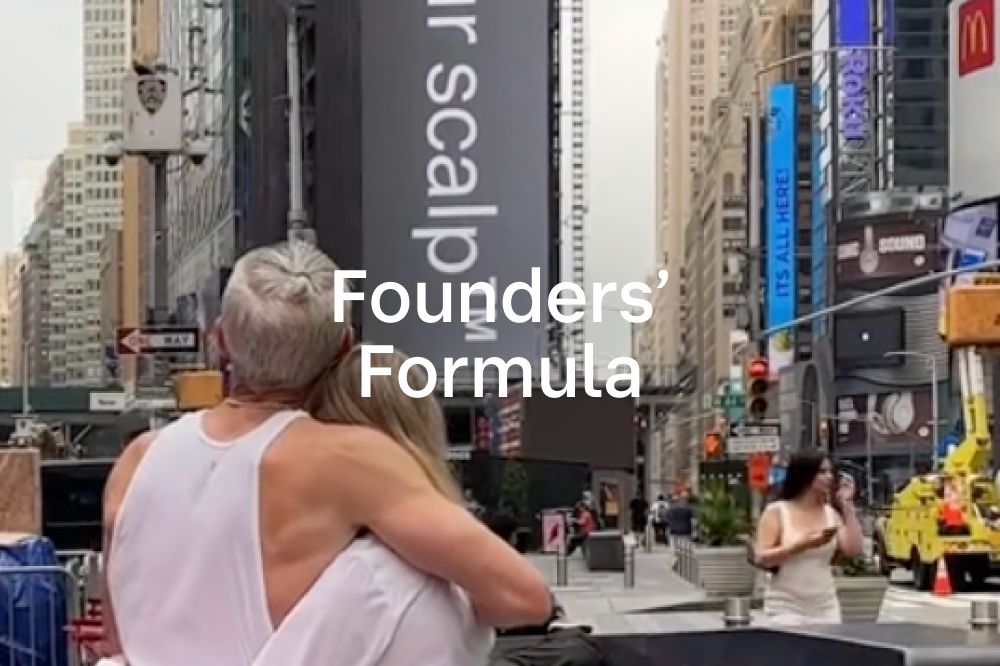Founders’ Formula: Knowing your endgame with Nana Joes Granola
What is the one thing you wish you knew when you started your brand? We wanted to gather the founders of incredibly successful brands to share their single, powerful lesson. This is our brand new video series, Founders’ Formula.
Here ex-pastry chef Michelle Pusateri, founder of Nana Joes Granola, shares our vital insight – know your endgame.
Michelle has a pretty impressive resume – after graduating from the Culinary Institute of America, she worked at The Fairmont Hotel, the Four Seasons Hotel and Nopa before starting her brand Nana Joes Granola.
Nana Joes Granola makes paleo, gluten-free, certified organic granola. They’ve been in business for fifteen years, and stocked in Whole Foods for a decade.
In that time, they’ve reached $2 million in yearly revenue, growing 20% in the last year alone. They’re on a pretty incredible trajectory.
But here’s why she says you can’t let your brand’s success distract you from knowing your endgame.
Michelle Pusateri, founder of Nana Joes Granola says:
The one piece of advice that I would give to budding entrepreneurs or somebody starting a business is to know your endgame.
I'm Michelle Pusateri from Nana Joes Granola. We produced granola that is gluten-free, certified organic, super delicious.
I was a trained pastry chef before, so I really wanted to make a granola that was both functional and tasty. So it would fuel any adventure.
We started in 2010. We built a manufacturing facility in 2012. In 2014, 2015, we launched in Whole Foods in the Northern California region and have been in their stores ever since.
And we are at about $2 million revenue right now, hoping to grow a little bit more this year. We grew 20% last year.
So when I started Nana Joes Granola, I had no idea what I was doing. I didn't know how to price my product.
I didn't know how to price my product for going into retail, and all the chargebacks and all the things that are necessary for you to have built into your margin if you want to grow.
There's also the other flip side. If I want to grow to be acquired, then I would have to start looking for investment immediately and have those dollars for growth at any cost.
[This would be] for getting into grocery stores, for buying those end caps, for really making sure that I have enough money for marketing and everything else. I think that's part of it as well.
The challenge: No scenario planning
When we went into lockdown, we were on this trajectory of being profitable, really expanding out into other regions.
And I think the most personal moment was like, anything can change and happen in a moment.
And I think I wish that I was more prepared for those changes and really had like a bad and a good case scenario built into my model of, “Here's what's going to happen if these, if we have tariffs”, which is what's happening now.
And if I have a good and bad case scenario of what our margins will be, then I can really look at how I can be more efficient within the facility, and how I can just research a little more on our cost of goods and our ingredients and just keep my eye on the ball?
I found out that from the end of 2019 to the beginning of 2021, we had a 52% increase in our cost of goods, and it was 5c here, 10c there, 5c there.
The solution: OpEx and COGS audits
So now we look at it monthly, instead of looking at it when it's necessary. So we have a structure in place now where we do audits of all of our ingredients and the cost of our ingredients. So we keep an eye on that.
How do you navigate that if you don't have your eye on how that's going to directly affect your margins, your operational costs, your payroll, your… everything?
So kind of looking at that in a different light and forecasting differently within not just a blanket forecast, but forecasting differently within each category, like payroll is going to go up 5-10% every year.
Our rent is going to go up with the cost of living every year. So building those things into a forecast so we know what's in the future, instead of just kind of flying by the seat of our pants pretty much.
I think it just takes time to do that first model. It took us about four months to get that first model up and running. And now it's just a plug and play.
So I can look at it and duplicate that model within a spreadsheet, and then add in some of those costs and do a percentage pricing year over year, instead of being like, ‘OK, we're going to grow 15%’.
Our overhead might raise 10%, so we can see it and break it out in different categories of how each thing is going to affect us.
The impact: Staying reactive to competitors
There's resets in most of your stores every year, and you don't know exactly what that buyer will do and how they'll react to new products coming on the market, because there's constantly granola coming on the market.
It's a very oversaturated, very competitive market, and a lot of people are putting their money and resources into launching granola blends. You think, “how is that going to affect me?”
And it's looking at that and making sure that we have good positioning and sales on the grocery store shelves, and that our products are always in stock. I think that's one of the biggest things to make sure that that happens.
The end goal when I started Nana Joes Granola was unclear. And then, after about two to three years of running and growing Nana Joes Granola, I decided to create a co-op out of my brand.
I wanted to make sure that I was building something that I could give to my employees and team. But when the pandemic hit, it changed everything.
I didn't want to do that anymore, because I was afraid that what I went through as an entrepreneur and business owner during the pandemic, and what we're going through right now with tariffs, is a very difficult, sticky place to navigate.
And I think that would be something that I wouldn't want to pass down to anybody, because it's very stressful.
So right now, the end goal is to just making sure that we get to a point where we are profitable and sustainable, and then figure it out from there.
I think one of the biggest things that I would love to do at some point is to be able to sell Nana Joes Granola.
Apply in minutes. Access funds in hours.
Wayflyer has funded over 5,000 businesses worldwide with $5 billion worth of working capital, backed by world-leading financial institutions.



